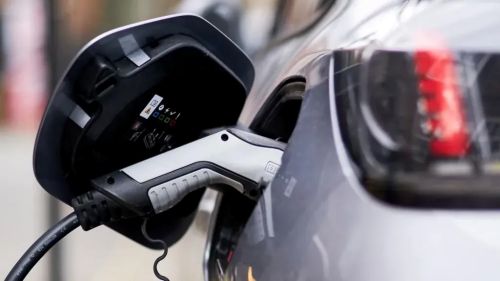


Understanding AC EV Charging: The Essential Guide for Everyday Electric Vehicle Use
Understanding AC EV Charging: What It Is and When to Use It
As a Leading EV Charger Manufacturer in China, LiCB Charge Offers Reliable AC and DC Electric Vehicle Charging Stations Alongside Comprehensive Charging Solutions.
As electric vehicles (EVs) become increasingly popular, knowing how to charge them efficiently is essential for drivers, homeowners, and businesses. One of the most common methods is AC EV charging, which stands for Alternating Current Electric Vehicle Charging. Whether you’re installing a charger at home or evaluating public options, understanding AC charging helps you make smarter choices that save money and extend your EV’s battery life.
AC (Alternating Current) is the type of electricity that powers homes and businesses. However, EV batteries store energy as Direct Current (DC). This means that when you plug your EV into an AC charger, the vehicle’s onboard charger converts AC power into DC to charge the battery.
This onboard conversion is crucial because it determines how fast your EV can charge using AC power. Onboard chargers usually support power levels from 3.7 kW up to 22 kW, meaning charging can take from a few hours to overnight, depending on the vehicle and charger.
Connection: You plug your EV into an AC charging station using a compatible connector (Type 1 or Type 2).
Power Delivery: The charger supplies AC power.
Conversion: The EV’s onboard charger converts AC to DC.
Battery Charging: The converted DC power charges the battery.
The key limitation is the onboard charger’s capacity — even if the station offers 22 kW, your car might only accept 7 kW, slowing the charge rate.
AC charging differs significantly from DC fast charging:
AC Charging: Power is delivered as AC and converted inside the EV; charging is slower (up to 22 kW). It’s ideal for longer stays such as home or work charging.
DC Fast Charging: Power is delivered directly as DC and converted in the charger itself; charging is much faster (50 kW to 350 kW) and suited for quick stops on road trips.
Because DC fast chargers are larger, more costly, and require more infrastructure, they’re typically found along highways, while AC chargers are more common in daily settings.
Cost-Effective: Easier and cheaper to install than DC chargers.
Widely Available: Common in homes, workplaces, shopping centers, and public places.
Battery-Friendly: Slower charging reduces battery wear and heat buildup.
Ideal for Overnight Charging: Fits well with daily routines, especially at home.
Supports Renewable Energy: Can be integrated with home solar systems to reduce costs and environmental impact.
AC charging suits most daily situations:
At Home: Overnight charging using Level 2 chargers ensures a full battery by morning.
At Work: Many workplaces offer AC charging for employees to top up during the day.
Running Errands: Shopping centers and public venues provide AC chargers for convenience.
Daily Commuting: Regular, predictable driving habits don’t require fast DC charging.
Multi-Unit Dwellings and Hotels: Ideal for overnight or extended parking periods.
Charging times depend on your car’s onboard charger and the charger’s power output:
| Power Output | Approximate Charge Time (60 kWh Battery) | Typical Use |
|---|---|---|
| 3.7 kW | ~16 hours | Level 1 (standard outlet) |
| 7.4 kW | ~8 hours | Home Level 2 charger |
| 11 kW | ~6 hours | Workplace or public AC |
| 22 kW | ~3 hours | Fast public AC stations |
For most EV owners, yes. The average driver covers less than 50 miles daily, and AC charging easily replenishes sufficient range overnight or during work hours. DC fast charging is mainly needed for long trips or emergencies.
AC EV charging is the practical and economical choice for everyday use. It’s accessible, battery-friendly, and integrates well with renewable energy sources. Understanding when and how to use AC charging will help you get the most from your EV—keeping you powered, saving money, and contributing to a greener future.Know more about Google SEO Directory
